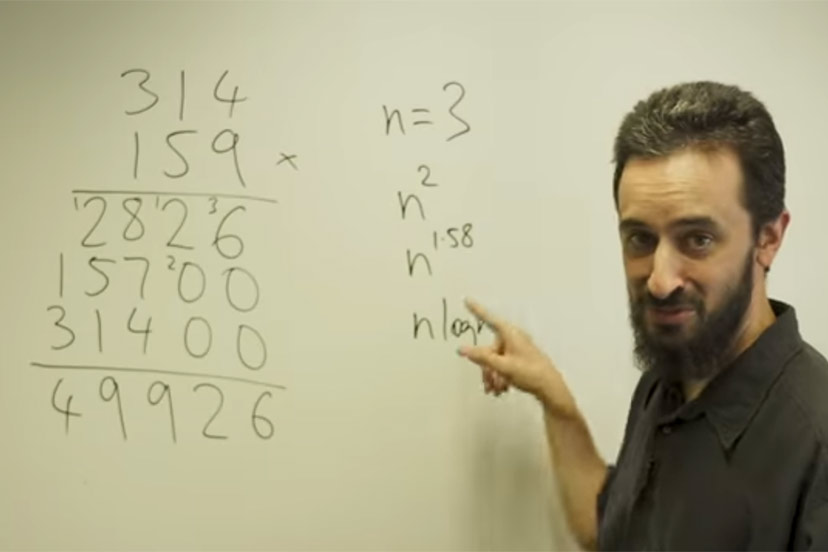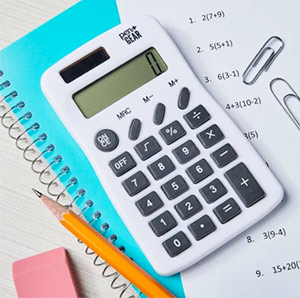In the photo above, which I ‘borrowed’ from a YouTube video, Australian mathematician David Harvey is discussing better ways to multiply.
Mr. Harvey is an assistant professor at the University of New South Wales in Sydney, and he says, if you are multiplying inefficiently, you will be probably be performing ‘n2‘ operations. But you can multiply, using as few as ‘n log n’ operations.
I stumbled across this important news in a 2019 Popular Mechanics article by David Grossman, titled, “This Guy Found a Faster Way to Multiply”.
The article starts out like this:
From grade school onward, complex multiplication has been a headache. But an assistant professor from the University of New South Wales Sydney in Australia has developed a new method for multiplying giant numbers together that’s more efficient than the “long multiplication” so many are taught at an early age.
I’m not sure what qualifies as a “giant number,” but I suppose they are numbers with a lot of “9’s” and “0’s”.
The Popular Mechanics article includes a YouTube video that runs less than two minutes, just long enough to whet your appetite for clever mathematical tricks… but not long enough to actually teach you how to perform the trick at home.
Here’s assistant professor David Harvey in a video, discussing the problem of multiplying 314 x 159. (Not exactly ‘giant numbers’, in my humble opinion.)
As Professor Harvey explains, when using ‘long multiplication’, there are nine individual multiplication operations involved in this math problem, any one of which could easily be done wrong. And, if you are in grade school, very likely to be done wrong. Especially, 9 X 4.
Plus, we still have to add the three sub-products to get the final result. More chances to screw it up.
In order to keep the video at under two minutes, Professor Harvey starts off with the ‘long multiplication’ problem already written, and solved, on the white board . We don’t know, therefore, how long it took him to actually perform the multiplication. That was sort of cheating, in my opinion.
But I can sympathize. I will readily admit that I was one of the many children who struggled with this task in grade school. And if you ask me today to multiply “314” by “159” using long multiplication, you will get a dirty look from me.
So my hat is off to people like Professor Harvey who want to make our lives easier. But you may have noticed, if you watched the video, that Professor Harvey does not actually show us how to perform multiplication more easily. He merely tells us that there is a better way. Something to do with ‘n log n’.
Probably, we have to purchase his online math course to find out his trick?
I do not recommend paying for an online course, however, because we already have an easier way to multiply, and you can purchase one at Walmart for $1.98.
Many things frustrated me in grade school. We weren’t allowed to use calculators, for instance. The teachers got to use calculators, but not the kids. As a result, many of us were ‘turned off’ to the whole idea of multiplication, at least until we became adults, at which point we began looking for better ways to multiply.
A moment ago, I asked Siri — the digital assistant on my iPhone — to perform Professor Harvey’s math problem.
“Siri, how much is 314 x 159?”
She gave the correct answer within two seconds.
As I understand it, our species has been on a relentless quest for improved multiplication techniques.
From the very beginning, multiplication was our primary task.
Genesis 1:27-28
So God created man in his own image, in the image of God he created him; male and female he created them. And God blessed them. And God said to them, “Be fruitful and multiply, and fill the earth…”
Seems like we figured that part out, and now you can hardly make a left-hand turn onto Highway 160.


